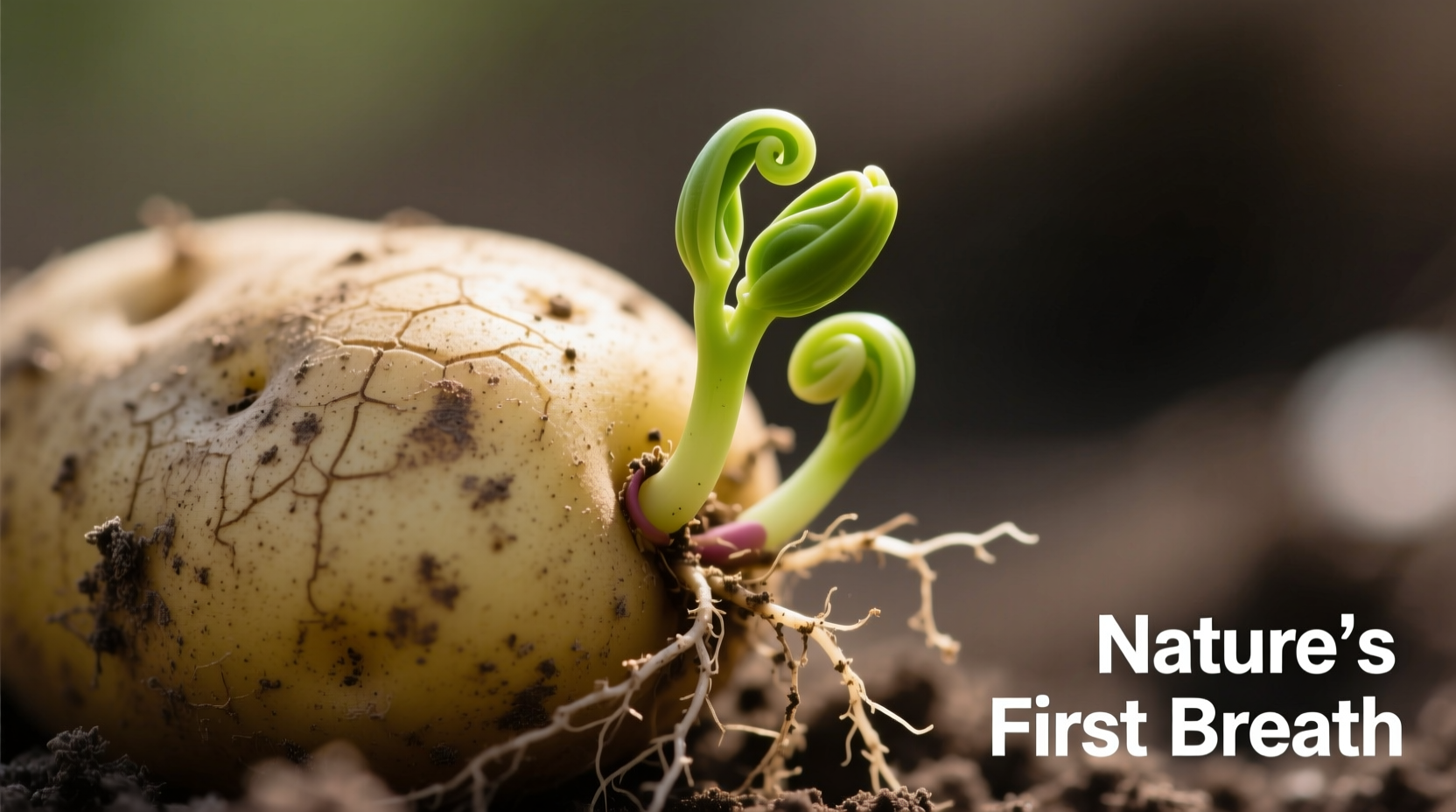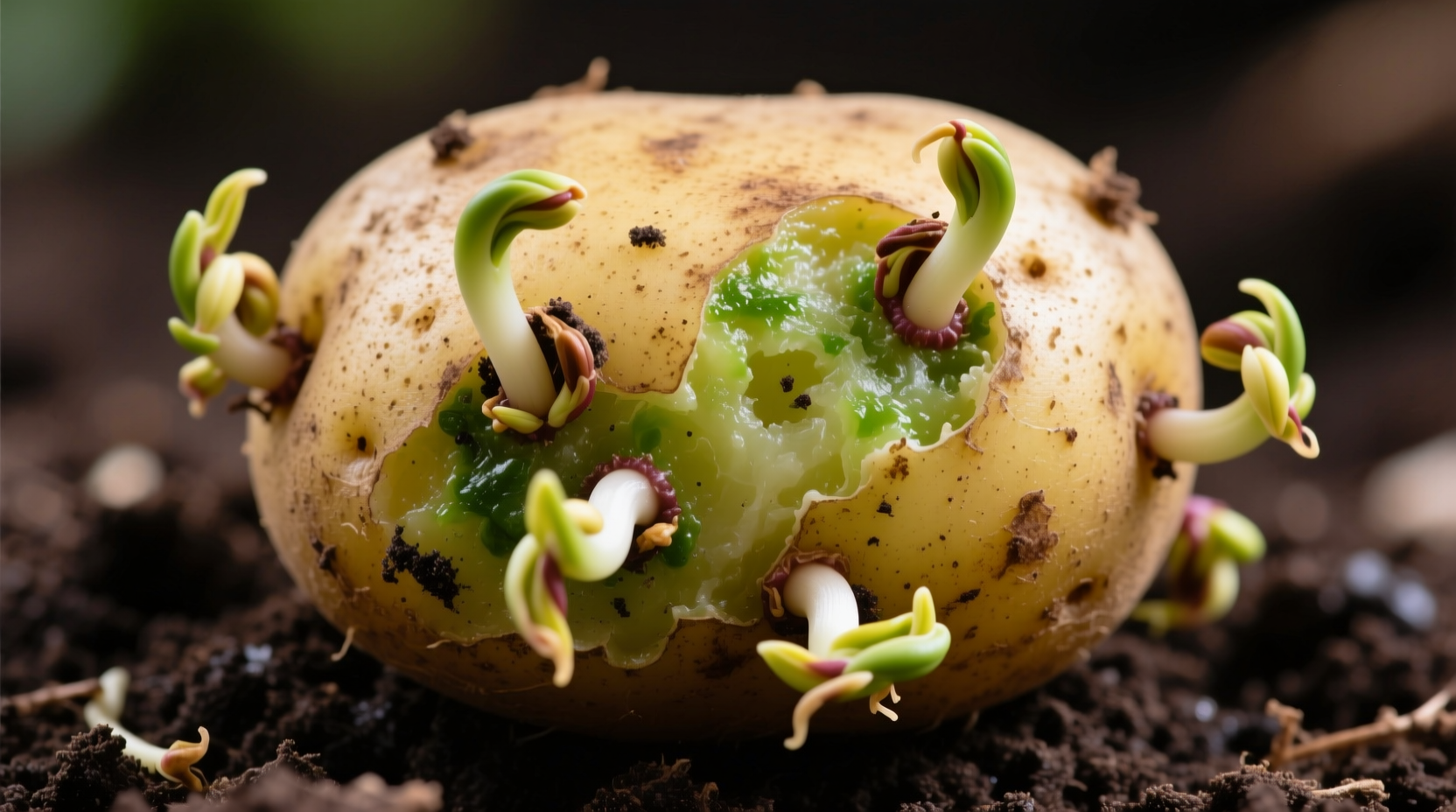Yes, you can eat mildly sprouted potatoes if you properly remove all sprouts and green areas, but severely sprouted or green potatoes should be discarded due to potentially harmful levels of natural toxins called solanine and chaconine.
Understanding Potato Sprouting: What You Need to Know First
When potatoes begin to sprout, they're simply following their natural biological process to reproduce. This doesn't automatically make them dangerous, but it does trigger chemical changes that affect safety and quality. The key question isn't just "can you eat a potato that has sprouted" but rather "how sprouted is too sprouted?"
According to the U.S. Food and Drug Administration, properly handled sprouted potatoes rarely cause illness, but understanding the risk factors is crucial for food safety in your kitchen.
Why Potatoes Sprout and What Changes Chemically
Potatoes sprout when exposed to light, warmth, and humidity - conditions that signal the tuber it's time to grow. During this process, two significant changes occur:
- Starch converts to sugar - This affects taste but isn't a safety concern
- Natural toxin levels increase - Specifically solanine and chaconine, which are the real safety concern
These glycoalkaloids are the potato plant's natural defense mechanism against pests and sunlight. While present in small amounts in all potatoes, their concentration increases significantly as potatoes sprout and develop green patches.

Solanine Levels: The Critical Safety Threshold
| Condition | Solanine Level (mg/100g) | Safety Status |
|---|---|---|
| Fresh, firm potato | 2-13 | Perfectly safe |
| Mildly sprouted (small sprouts) | 20-50 | Safe with proper preparation |
| Green skin visible | 50-100 | Risky - discard or heavily peel |
| Severely sprouted with green areas | 100-320 | Unsafe - discard immediately |
According to research published by University of Minnesota Extension, solanine levels above 200 mg/kg (20 mg/100g) are considered potentially toxic. The table above shows how sprouting dramatically increases these levels.
When Sprouted Potatoes Are Still Safe to Eat: A Step-by-Step Guide
You can safely eat potatoes with minor sprouting by following these professional kitchen techniques:
- Assess firmness - Gently squeeze the potato. If it's still firm with only small sprouts (¼ inch or less), it's likely salvageable
- Remove all sprouts completely - Use a paring knife to dig deep into each sprout eye, removing the entire sprout and surrounding tissue
- Peel generously - Remove at least 1/8 inch of potato around and beneath each sprout location
- Check for green discoloration - Any green areas must be completely removed as they indicate high solanine concentration
- Cook properly - While cooking doesn't destroy solanine, proper cooking ensures you'll notice any bitter taste that indicates high toxin levels
Important note: Solanine isn't destroyed by cooking temperatures. If a potato tastes bitter after cooking, discard it immediately - this is your body's warning sign.
When to Definitely Discard Sprouted Potatoes
Certain conditions mean your sprouted potatoes should go directly in the trash, not your cooking pot:
- Multiple long sprouts (over ½ inch)
- Visible green coloration anywhere on the skin or just beneath
- Soft, wrinkled, or mushy texture
- Strong earthy or bitter smell
- Signs of mold or decay
The USDA Agricultural Research Service emphasizes that when in doubt, throw it out. It's not worth risking food poisoning for a few cents' worth of potato.
Potato Sprouting Timeline: How Danger Increases Over Time
Understanding how potato safety changes over time helps you make better decisions:
- Days 1-7 after purchase: Ideal condition - firm, no sprouts, minimal solanine
- Weeks 2-3: First small sprouts appear - safe with proper preparation
- Weeks 4-6: Sprouts grow longer, possible green spots - increasingly risky
- 6+ weeks: Extensive sprouting, green skin, soft spots - definitely unsafe
This timeline varies based on storage conditions, but demonstrates why checking your potatoes regularly matters.
Proper Potato Storage: Prevent Sprouting Before It Starts
The best approach to sprouted potato safety is prevention. Follow these storage guidelines from food safety experts:
- Store in cool, dark place - Ideal temperature is 45-50°F (7-10°C)
- Avoid refrigeration - Cold temperatures increase sugar content and can create acrylamide when cooked
- Keep away from onions - Onions release gases that accelerate potato sprouting
- Ensure good ventilation - Use mesh bags or paper bags, not plastic
- Check regularly - Remove any sprouting potatoes immediately to prevent affecting others
Properly stored potatoes typically remain sprout-free for 2-3 months, significantly reducing your chances of encountering this food safety question.
What to Do If You've Eaten Sprouted Potatoes
If you've consumed potatoes with high solanine levels, watch for these symptoms which typically appear 8-12 hours after consumption:
- Nausea and vomiting
- Stomach cramps and diarrhea
- Headache and dizziness
- Fever in severe cases
Mild cases usually resolve within 24 hours with rest and hydration. For severe symptoms or if a child has eaten sprouted potatoes, contact Poison Control at 1-800-222-1222 or seek medical attention immediately.
Common Misconceptions About Sprouted Potatoes
Let's address some widespread myths that could put your health at risk:
- "Cooking destroys the toxins" - False. Solanine and chaconine are heat-stable and aren't broken down by normal cooking temperatures
- "If it doesn't taste bitter, it's safe" - Dangerous assumption. Toxin levels can be harmful before bitterness becomes noticeable
- "Peeling makes any sprouted potato safe" - Not true. Toxins can penetrate deep into the potato flesh, especially with extensive sprouting
- "Organic potatoes don't produce solanine" - Myth. All potatoes produce these natural defense compounds
These misconceptions highlight why understanding the science behind sprouted potato safety is crucial for protecting your health.
Practical Tips for Using Slightly Sprouted Potatoes
If you've properly prepared mildly sprouted potatoes, consider these culinary applications that maximize safety:
- Make mashed potatoes - The thorough cooking process helps detect any bitterness
- Create potato soup - Liquid-based cooking allows toxins to disperse somewhat
- Bake as roasted potatoes - High heat creates a protective crust while allowing you to monitor for unusual flavors
- Avoid raw applications like potato salad with uncooked potatoes
Always taste a small portion before serving to others, especially children who are more sensitive to glycoalkaloids.











 浙公网安备
33010002000092号
浙公网安备
33010002000092号 浙B2-20120091-4
浙B2-20120091-4